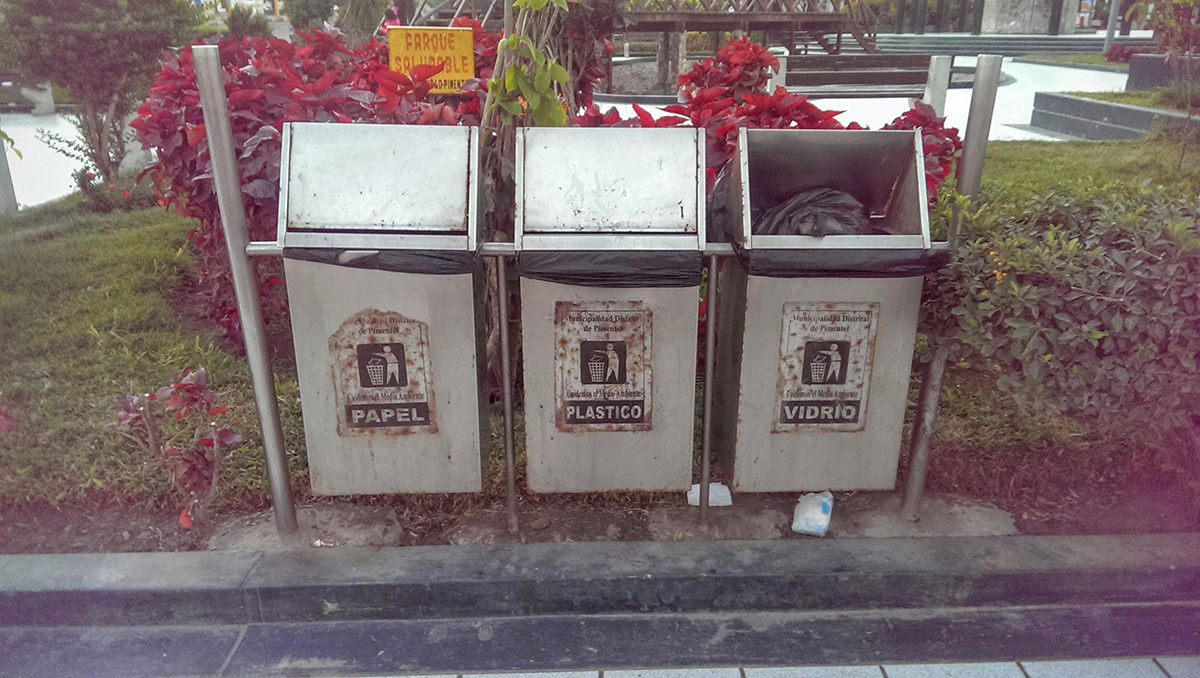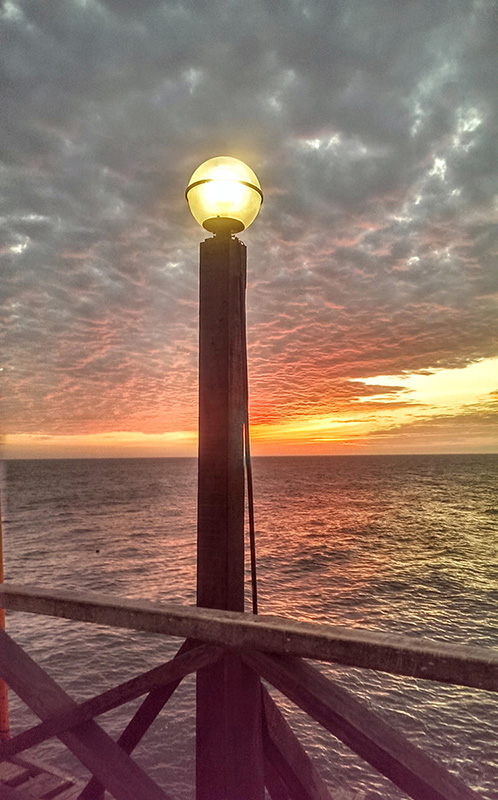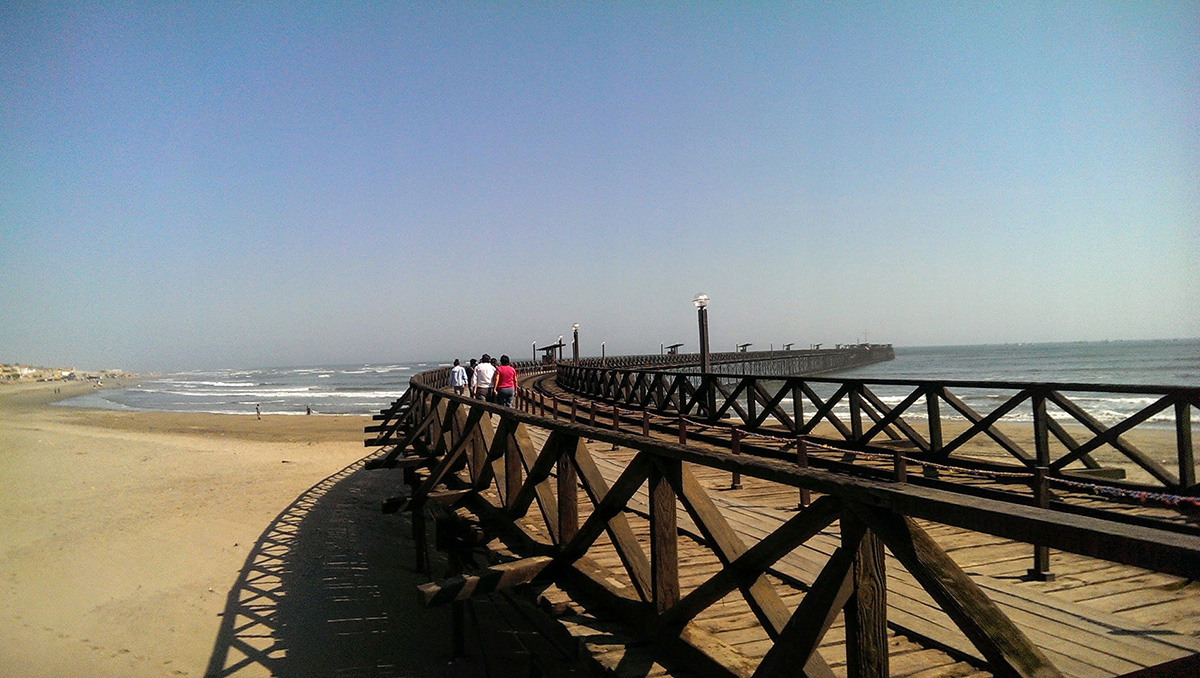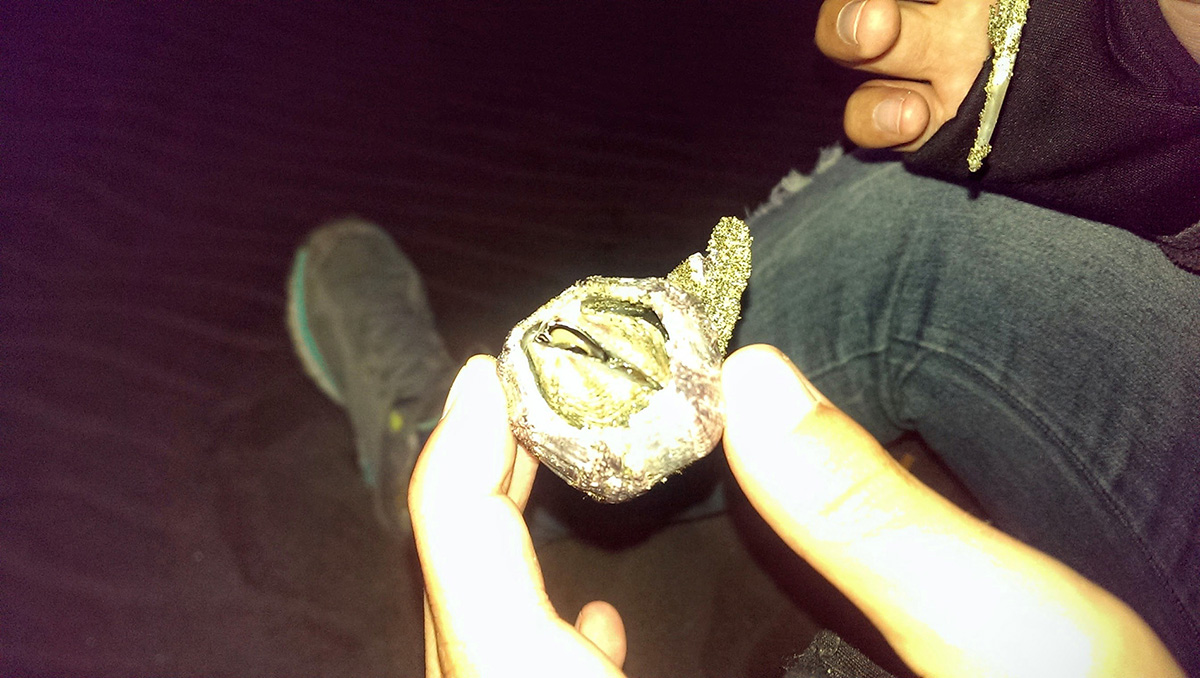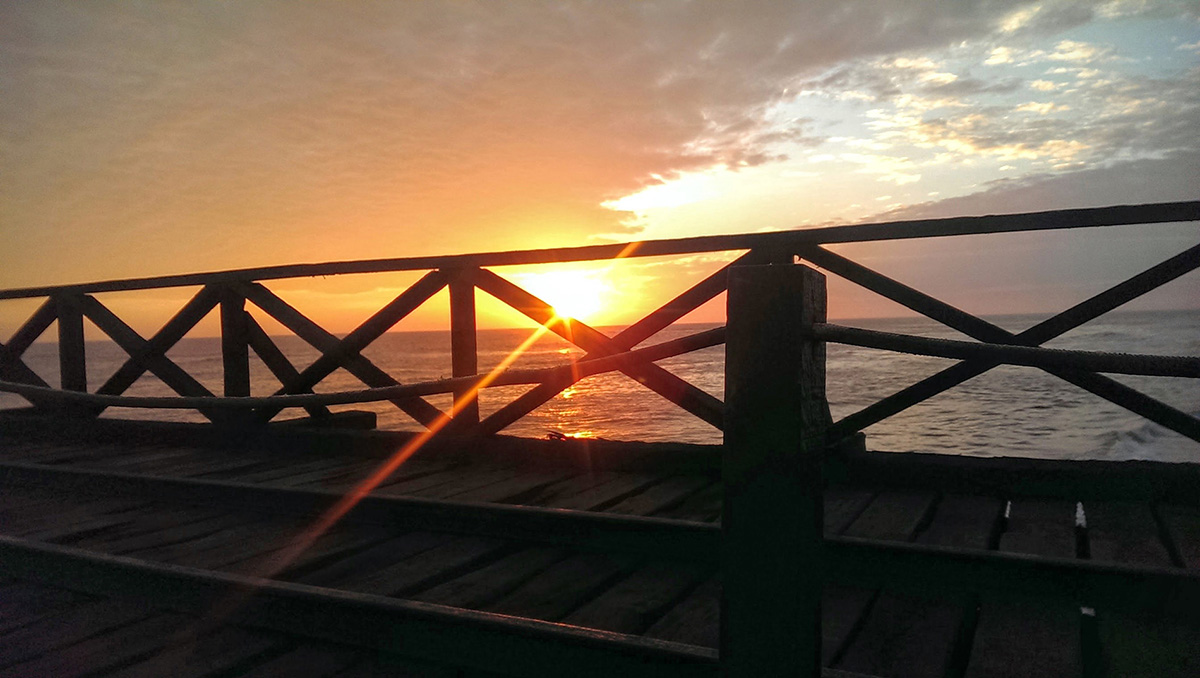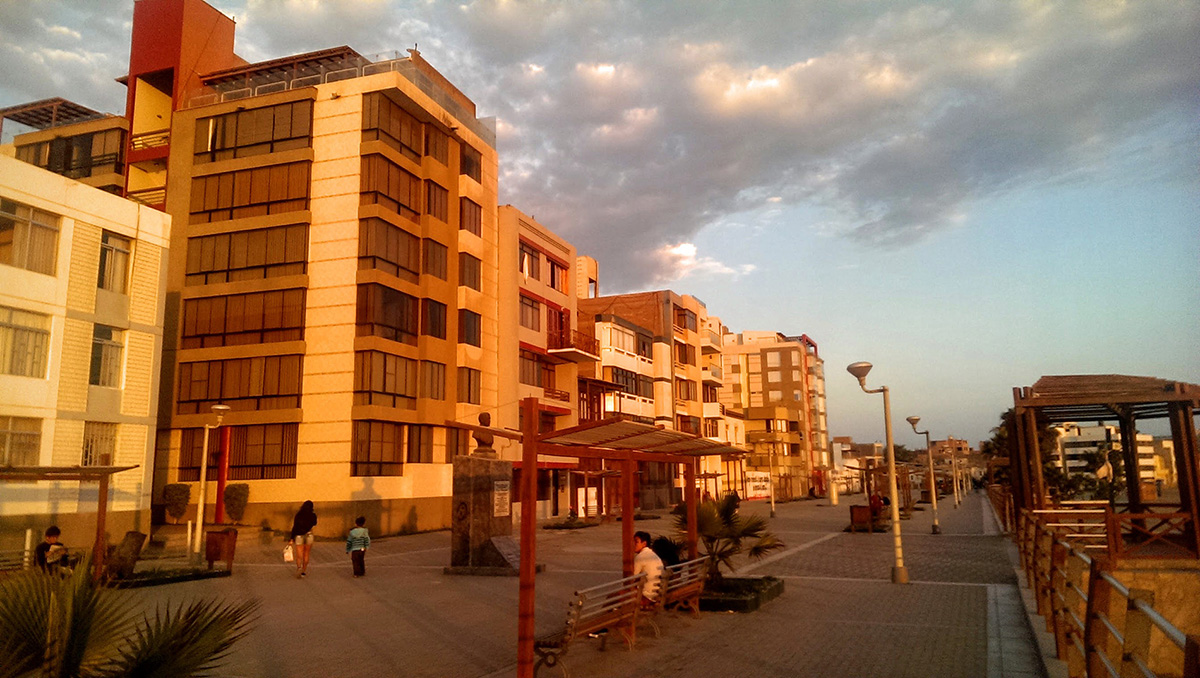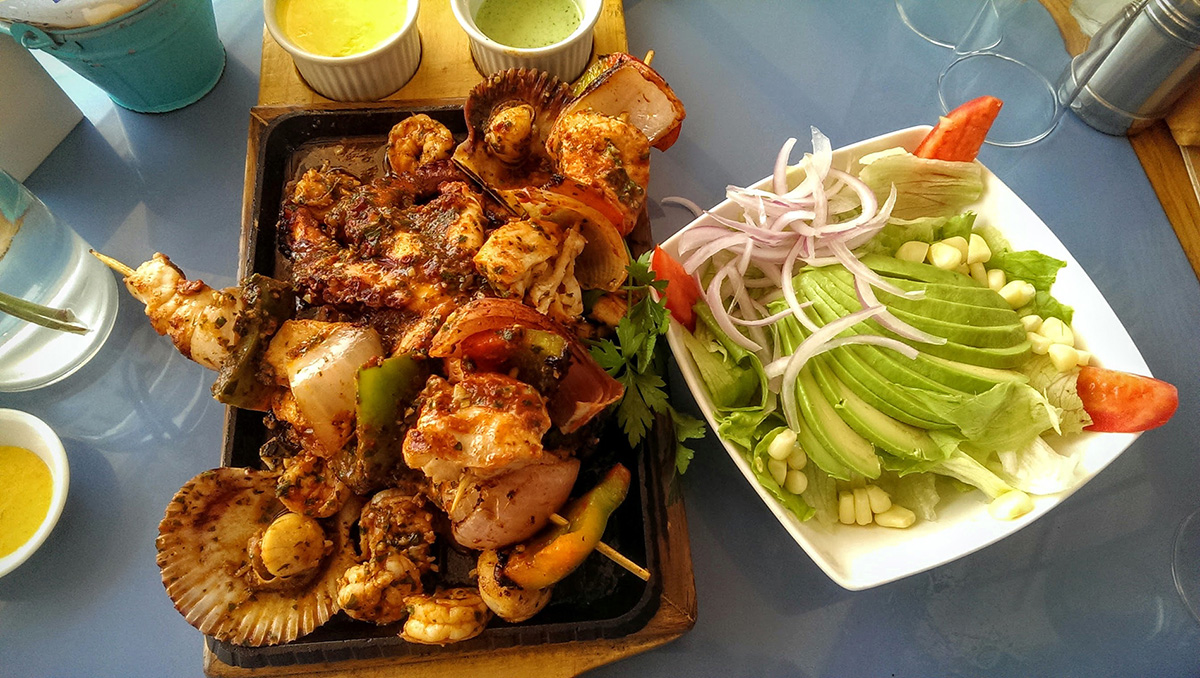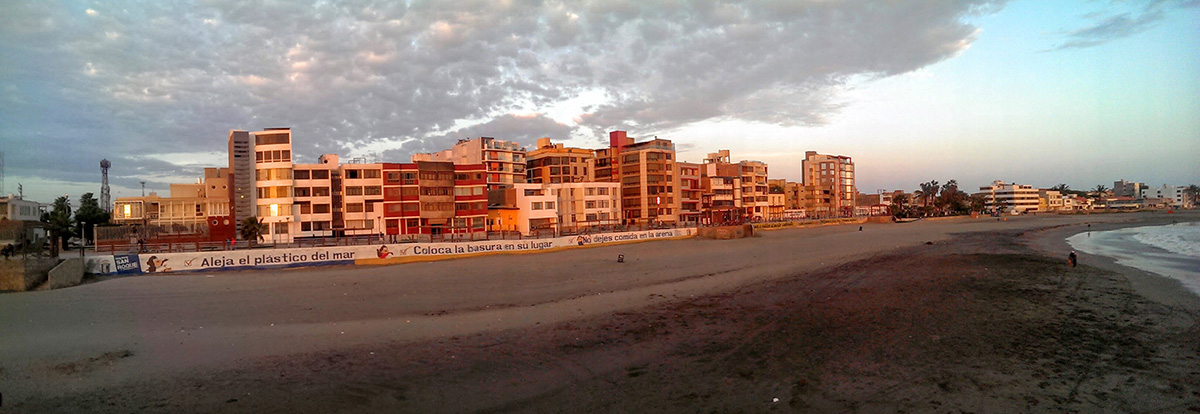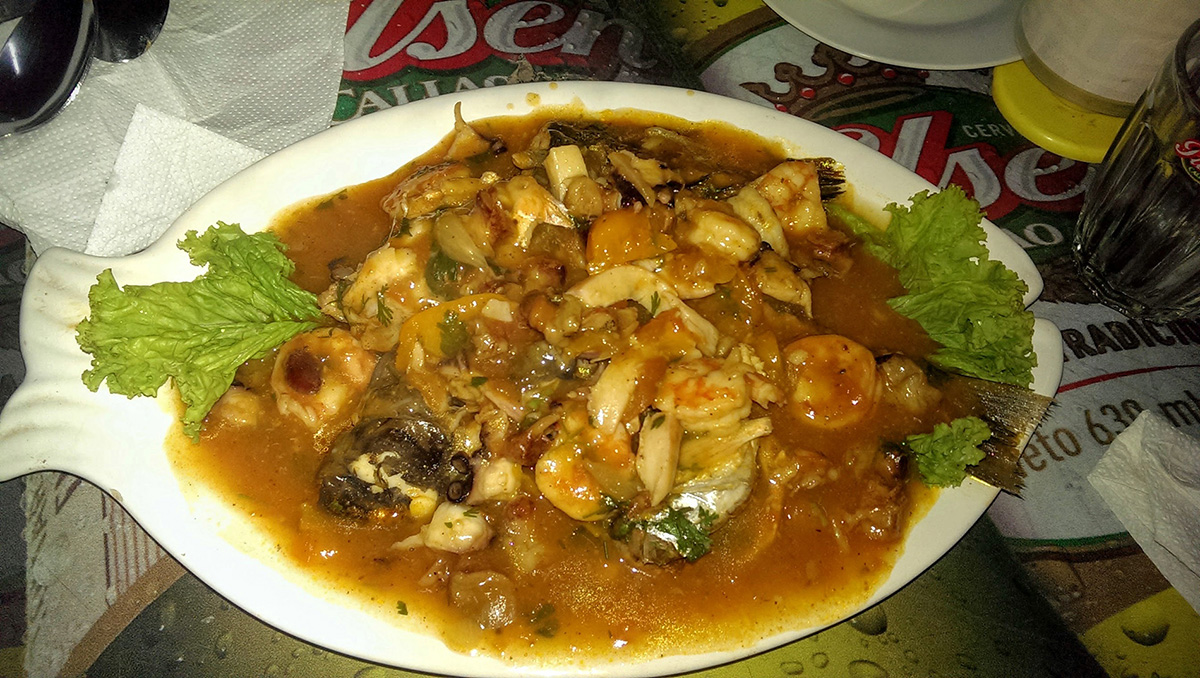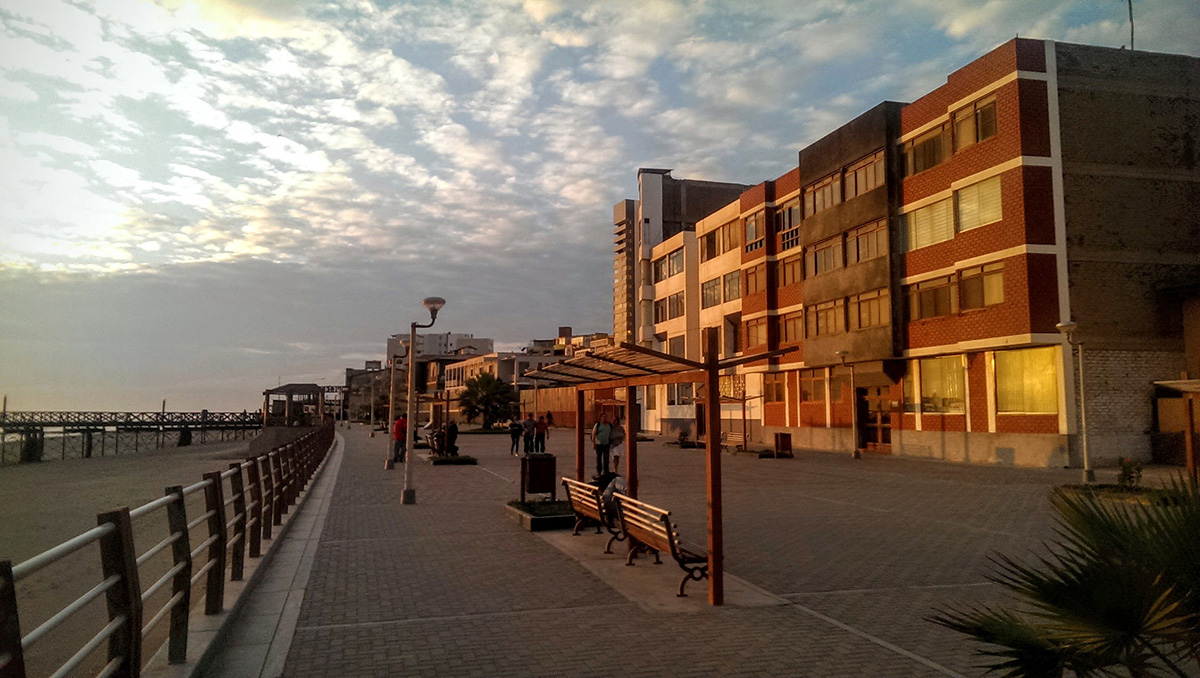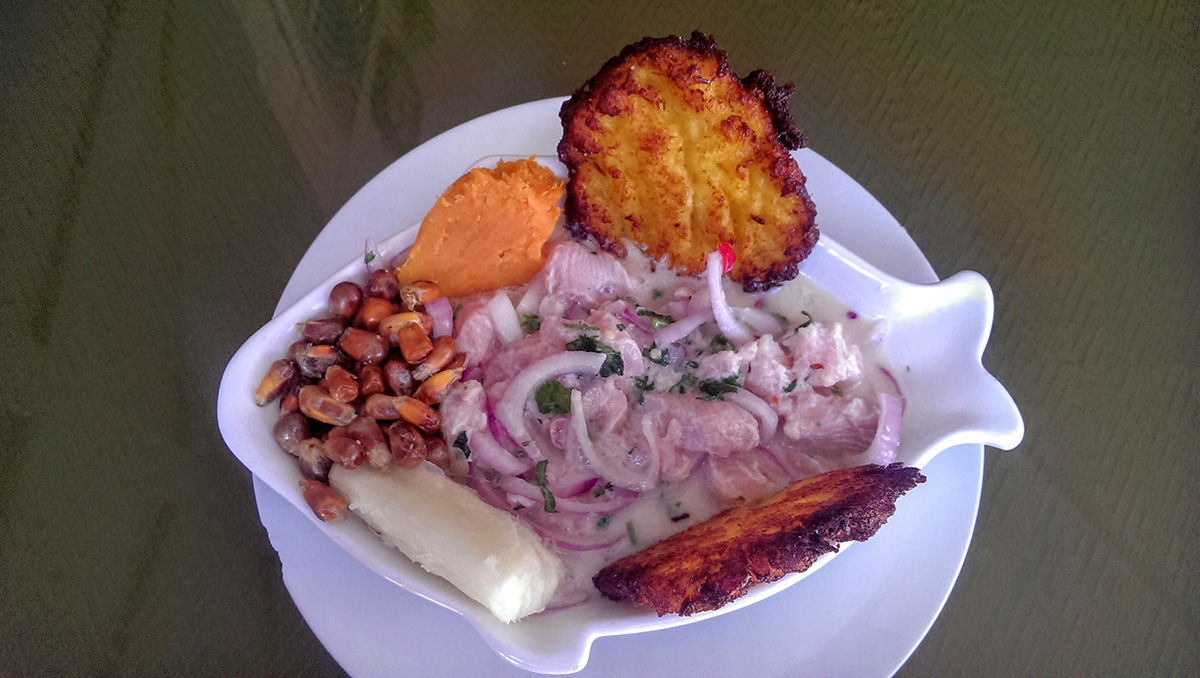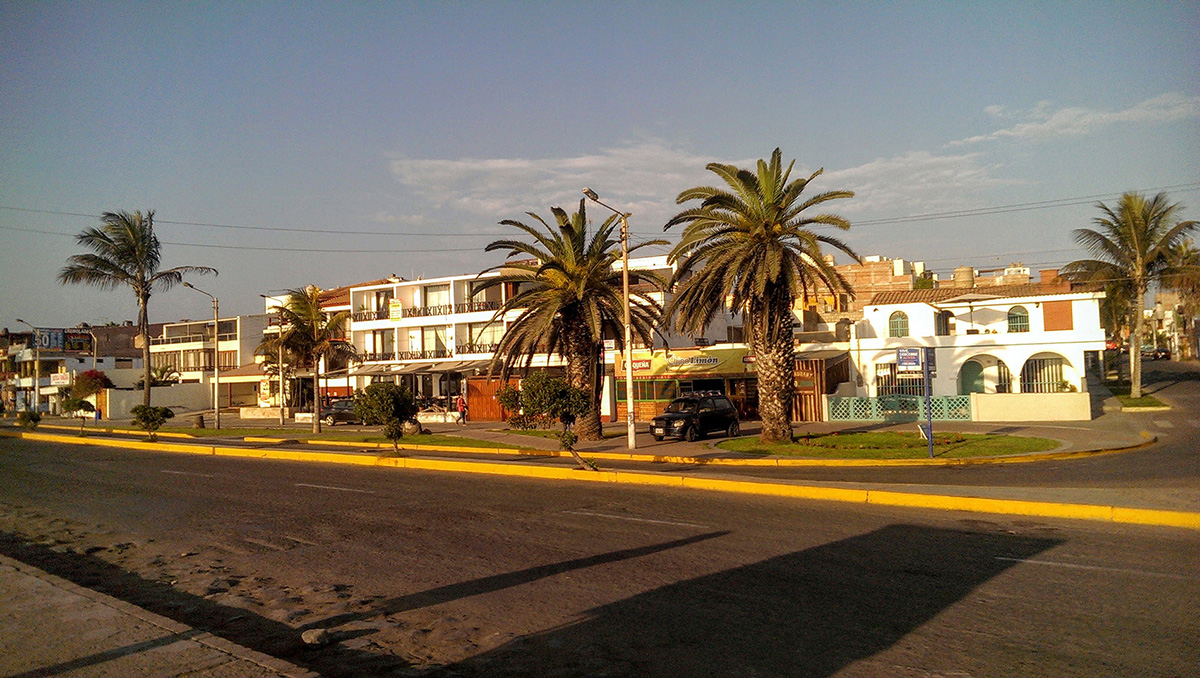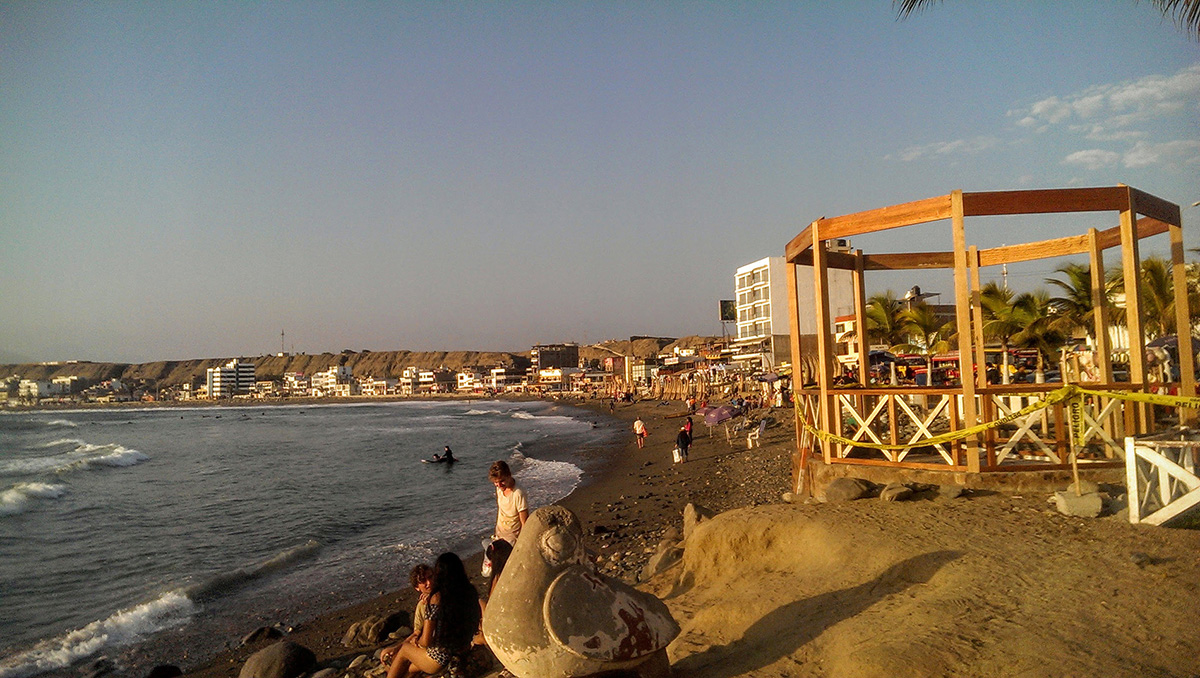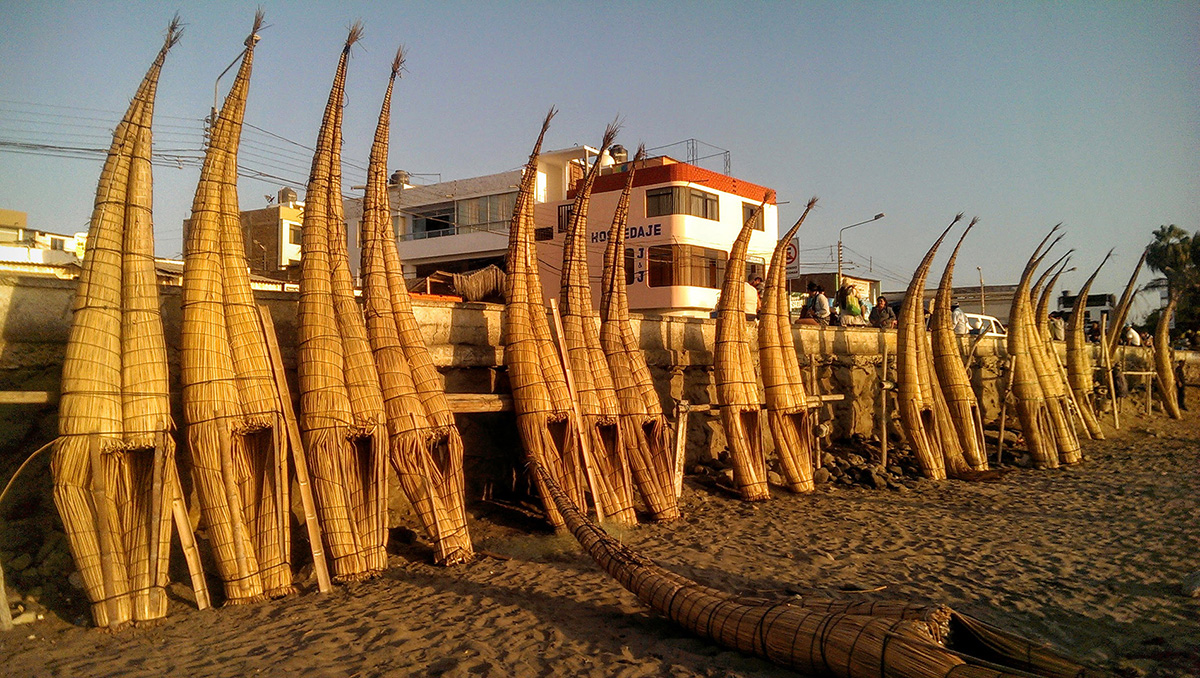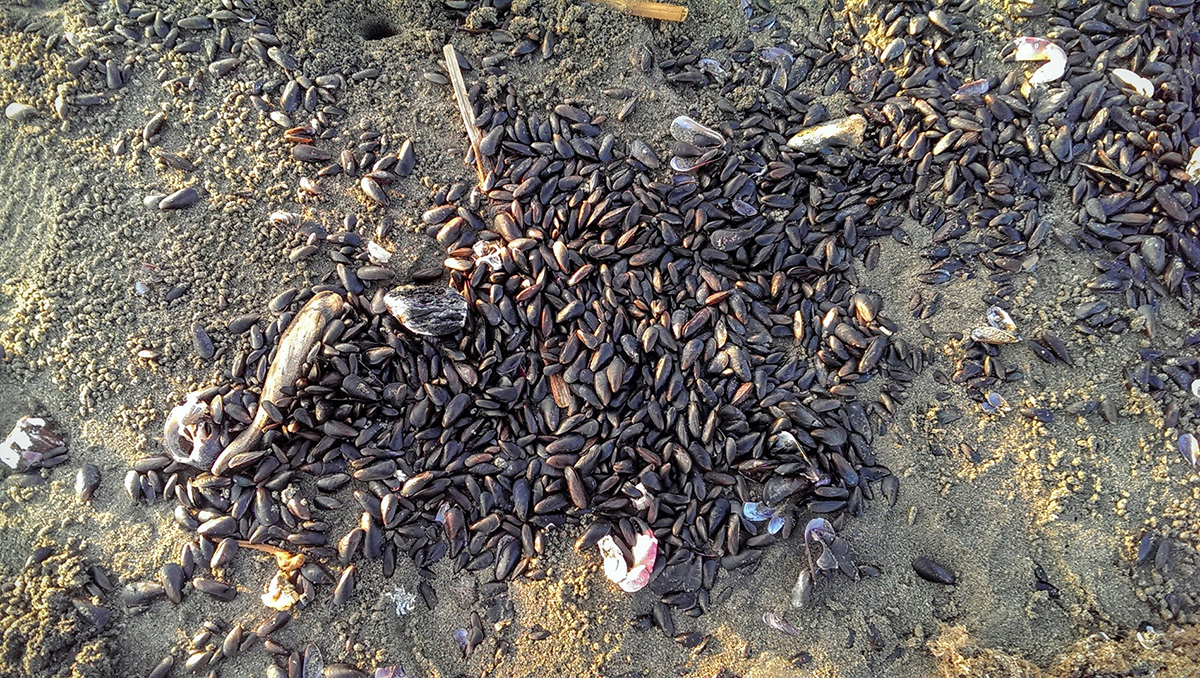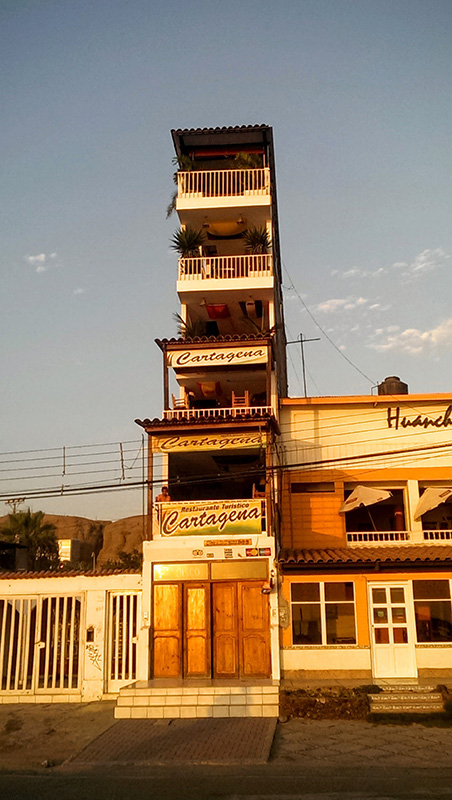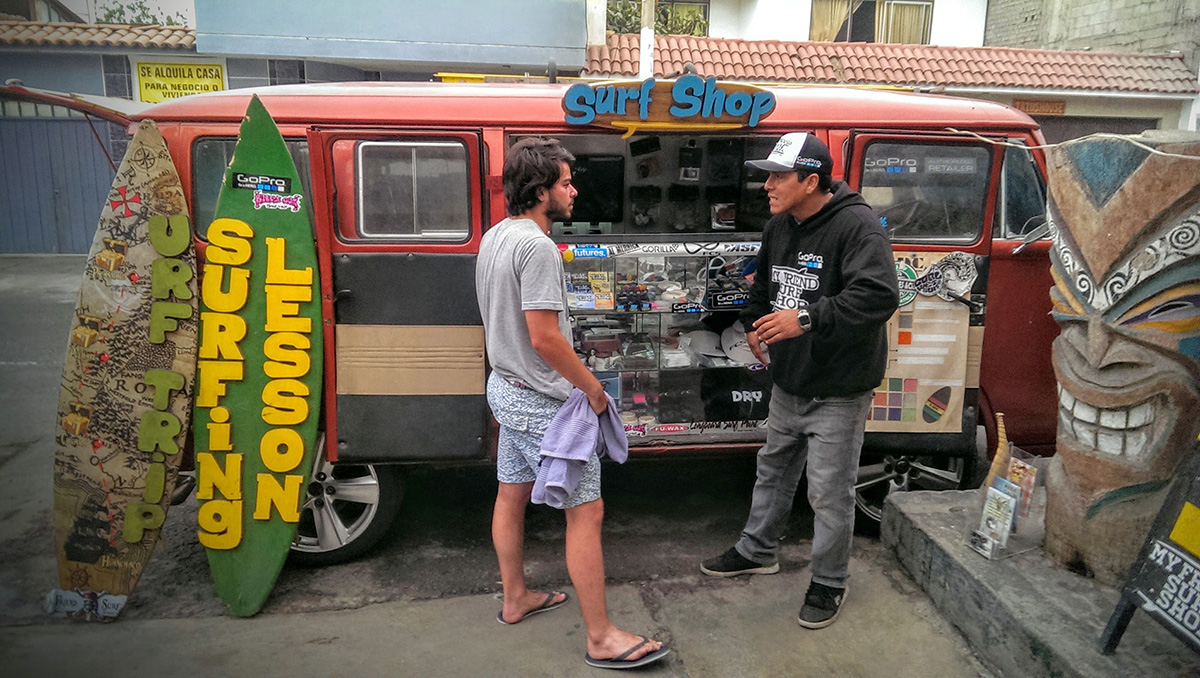There are few places in the world I believe, that can offer the vast variety of landscapes and activities as Peru. It’s a special country, made all the more special by the intrigue and mystery of the Inca and their incredible accomplishments and productions. The remains of their culture as well as the incredible structures and infrastructural creations are still there to be seen and experienced and it’s no wonder Peru is South America’s most visited country, even if most of that is specifically for Macchu Pichu. But Peru is so much more than the Inca. It’s a country full of diverse cultures spanning from the jungle to the Andes to the coast. It’s got so much on offer in terms of food, hiking, sights, and activities.
PERU : GENERAL FACTS
| Population | 30,444,999 |
| Capital | Lima |
| Languages | Spanish (official) 84.1%, Quechua (official) 13%, Aymara (official) 1.7%, Ashaninka 0.3%, other native languages (includes a large number of minor Amazonian languages) 0.7%, other 0.2% |
| GDP | $389.9 billion (2015 est.) |
| GDP Per Capita | $12,500 (2015 est.) |
| Agricultural Products | artichokes, asparagus, avocados, blueberries, coffee, cocoa, cotton, sugarcane, rice, potatoes, corn, plantains, grapes, oranges, pineapples, guavas, bananas, apples, lemons, pears, coca, tomatoes, mangoes, barley, medicinal plants, quinoa, palm oil, marigold, onion, wheat, dry beans; poultry, beef, pork, dairy products; guinea pigs; fish |
| Industries | mining and refining of minerals; steel, metal fabrication; petroleum extraction and refining, natural gas and natural gas liquefaction; fishing and fish processing, cement, glass, textiles, clothing, food processing, beer, soft drinks, rubber, machinery, electrical machinery, chemicals, furniture |
| Labor force |
agriculture: 25.8%
industry: 17.4%
services: 56.8% (2011)
|
| Population below poverty |
25.8% (2012 est.)
|
Half of Peru is a completely different planet. It’s a series of deserts each completely different from the other. In one country you can explore the entire range of deserts on the planet. And then you have the mountains which form a barrier between desolate landscapes the likes of which you’ll rarely see, to the Amazon on the other side. And there isn’t much in between. Peru was the biggest surprise in that I didn’t expect it to be a land of such contrast and extremes. I knew there was a desert. I knew there was the Amazon but I didn’t know it was one or the other and I had no idea to what extent the country was covered by desert.
The entire coastline is composed of half a dozen different kinds of desert. Move a bit into the interior and go up a few hundred meters and you have tundra. Literally tundra in the tropics. It’s unreal. Nothing grows over a foot high. The greens are strange and wonderful. There are lichens and mosses of all types and plants grow as tufts of hair on a bald scalp. The mountains are snow covered but desolate save for lichens and other tundra plants but gorgeous nonetheless. In many places it’s not a lack of water that creates the deserts but a completely uncooperative soil. In fact you couldn’t call it soil at all. It’s more like ground up rock completely devoid of any nutrients. And the one thing I’ve learned and seen firsthand is that nature is relentless in its conquest of life. In some jungles that I’ve seen a tree could be home to over 5 other types of plants but if that weren’t enough sometimes a plant that has found a home on a tree ends up becoming home to another plant that has found it to its liking. Layers of life on top of each other. So yes, nature will find any excuse to spring up life in any environment so the fact that in some areas of Peru there is literally not a tree, bush or even a blade of grass sometimes for almost hundreds of miles, is truly impressive.
Of course not all of the West side of Peru is like that, though the vast majority is. In some places life has taken hold in a big way but it’s just not what you think of when you think of a country that’s home to the Amazon and its native tribes. In some parts the mountains suffer from identity crises. They have no idea what color they want to be. The dress up like an over-aged hippie; white snowy hair, bare rock of different colors and a pale thin green t-shirt with darker green splotches. It’s beautiful nonetheless, but just not what I expected.
Northern Peru
Mancora
Mancora is considered one of the few real coastal party towns of Peru. The beaches aren’t great, but there’s a bit of surfing and kite-surfing. The temperature is optimal though the water can be a bit cold depending on the time of year. There are a few party hostels here that tend to accommodate people who want to relax by the sea and drink. Mancora is also a popular vacation destination during the summer months for Peruvians. The center of town is loaded with restaurants catering to both locals and tourists. While there isn’t much to see there are tons of bars and even a few clubs that light up the town on weekends. While it doesn’t compare to Montanita just next door in terms of concentrated partying, nor does it have the same vibe at all, it’s still recognized as being a decent place to spend a few days and relax, drink, take advantage of the sea and procure certain substances. All in all, it wasn’t nearly one of my favorite places, but I spent a week or so here and managed to enjoy a couple nights out.
Chiclayo & Pimentel (4th biggest city in Peru, pop: 600,440)
This is where I started, after rushing through Ecuador to meet Pinky, (hehe, she has a love-hate relationship with that name) an awesome person and a good friend with whom I traveled throughout almost all of Peru and a part of Ecuador, including the Galapagos. I spent most of the time in Pimentel rather than the busier larger city of Chiclayo. Pimentel is a nothing town on the coast, known more as a summer destination for Peruvians looking for some heat, sun and sea. There isn’t much to Pimentel, though it boasts a great pier. There’s a bit of surfing a couple decent restaurants, some great pacific sunsets, but it’s a relatively sleepy town. You won’t see foreigners here, except for a small contingent who are associated with a school and NGO of sorts based out of here, so it’s quite possible to go a couple days without seeing any white skin at all. The food and accommodations here are cheap and there’s only one grocery store in the whole town. Chiclayo however is a real city. In fact it’s one of Peru’s top 5 largest cities and it’s busy, full of traffic and a bit dirty and dusty. It’s on the edge of, well, desert as is pretty much every town and city on the western part of the country. You’ll find all the trappings of a major city here. Truth be told though I spent very little time here. While it’s a major city, it’s not particularly inviting or attractive. You’d be forgiven if you didn’t want to spend much time here. There’s no doubt you can find some cool things to do, including visiting one of its museums, but for the average traveler who doesn’t have a local connection, it’s not a highlight of Peru.
PIMENTEL
Huanchaco
Huanchaco is a relatively large town full of fishing for the locals and surfing for tourists. It’s an interesting town that has a decent mix of new buildings and a seaside promenade on the coast with a bunch of restaurants catering to select group of travelers that make it out here. Most foreigners here are here for surfing, which in my opinion didn’t seem very impressive. The beach is rocky and uninteresting but there is something about the town that is interesting. I wasn’t able to put my finger on it, and in truth I wasn’t there long but it was a place I felt I might want to return to at some point, during the summer when I can imagine the place is lively and full of a wide range of foreigners and locals.
HUANCHACO
Central Peru
Huaraz
Huaraz is certainly one of my favorites. This large town/small city tucked away in a valley within the Cordillera Blanca of the Peruvian Andes has charm, style, history and energy. It’s one of the lesser known Peruvian destinations, but still manages to attract a decent number of foreigners looking for some mountain activities. Few leave here disappointed. The surrounding landscape is spectacular. Snow-capped peaks, hundreds of lakes, more green than almost all of Peru, aside from the jungle, a large indigenous population, and tons of small Quechua towns make this a great place to visit. Huaraz is a fantastic hub for first-class hiking of all levels of experience. Situated at 3200 meters with nowhere to go but up, it’s got what trekkers, hikers and campers love. But the town itself is lively, dirty for its size, but always ready to provide entertainment, either via its bars, clubs, stores, regular parades, buskers restaurants or parks. It’s relatively cheap though not the cheapest place you’ll find in Peru.
Most people who come here, come for the nature, the hikes, the camping, the scenery. And if you’re here for that, you’ll feel right at home. The town is straddled by a river (unfortunately polluted and sad), features a decent sized central market, a couple medium-sized parks, tons of traffic, and a huge number of mountain gear shops that cater to both foreign and national tourists. This is a great place to find trekking equipment at decent but not great prices. You can find a wide range of products here and competition is stiff, so you’re likely to get some good deals if you’re up for some negotiation.
Looking for a fantastic meal? Check out Creperie Patrick. The variety is impressive and everything there is first-class, except for the prices which are quite reasonable. You can have everything from Cuy to Alpaca burgers, pasta and of course awesome crepes. You won’t regret it. I’m by no means a foodie, but I can certainly appreciate a good meal and this was one of the best I had while in Peru, which says something because the average Peruvian meal is quite decent and super cheap. Even in Huaraz, a good meal including a soup, a plate consisting generally of a meat, rice, and some vegetables, and a juice can still be had for 5 soles or about $1.75 US.
The people are generally friendly but not the warmest you’ll find in Peru. But the beauty of Huaraz can be found in the colorful, overdressed Quechua women who can be seen carrying around huge bags on their backs, selling veggies and meat at the central market or creating their artisanal products at the central artisanal market. From old to young, these women always put a smile on your face with their bright pink, blue, yellow, and green clothing.
But let’s face it, these are all secondary to why people come here. At the end of the day, as interesting and festive as the town is, it’s really about the surroundings. Whether you come for 4 day, 2 day, 1 day or multiple week treks, you’ll find it all here. Be prepared for the altitude which can wreak havoc on many people but if you can handle the thin air, low pressure, dry air and powerful sun, you’ll find some of the most breathtaking scenery around. Unfortunately I didn’t have the chance to do even half of what’s available. I managed 3 day hikes, one for free, the other 2 cost a total of 100 soles for everything including travel, and park entry fees. Well worth it considering they are full day activities. Prep your meals ahead of time if you can, but even if you want to go simple, you’ll have a chance to eat if you go with a tour group. Either way, you’ll pay at least 10 soles for entry into any of the national parks around here, and in some cases a bit more.
Speaking for myself, the 3 hikes I managed to have time for were Laguna Wilcacocha, Laguna 69, and the Postoruri Glacier. You can find tour operators everywhere but I happened to go with http://www.aventurasandinasperu.com/ for the Laguna 69 trek and the Postoruri Glacier. No complaints, aside from a couple flat tires. One thing to note, like all group treks, you’ll, well, be in a group. For some this is unacceptable, and it’s not my preference, but it didn’t bother me this time, maybe because I knew a multi-day trek wasn’t an option this time around and it was just so beautiful, that I was distracted and I managed a pace that allowed me to be pretty much alone for most of the way up and down, at least for Laguna 69.
My first hike was to Laguna Wilcacocha, just south of Huaraz. Getting there is super easy. Take a combi from the market, ask for one going South, the E or 10 should do the trick. It’s between 1 and 2 soles. They’ll drop you off at the bridge. Then you just follow the path up. It would be an easy hike if the altitude didn’t come into play, but if you haven’t been in Huaraz for a while, you’ll find it quite challenging. I think this is the perfect hike to get acclimated to the altitude. It’s about 2 hours up, decent level of difficulty when you factor in the altitude, scenery is beautiful but not spectacular, as you pass through and around small Quechua villages and farms, and get an opportunity to see them tending to their sheep, working on separating the wheat from the chaff, or just watching you walk by. This is an opportunity to get a small glimpse into the traditional lives of the Quechua people. The Laguna itself is tiny and if you go for the destination you’ll be disappointed. But the way up is calm, beautiful, and not particularly popular, so you won’t find many others on the path. It’s a decent hike, but I think best used as a warm-up for some of the other options in the area.
My second hike was with a tour operator, as mentioned earlier, to Laguna 69. It started at 5:30 and is supposed to end at 7pm. It’s a full day hike, and it’s not an easy one, but so incredibly worth it. This was the best hike that I managed in Huaraz. You do spend a few hours in the bus from Huaraz but the scenery on the way is impressive if you manage to stay awake, which most didn’t. You’ll pass by snow-capped mountains, Peru’s tallest in fact, sheer cliffs, and plenty of other beautiful scenes. Your first stop will likely be the Lagunas de Llanganuco. The best of them is a blue that you’ve likely never seen in your life. The bus drives along the lake for almost 5 minutes and ours stopped for a few minutes to let us take some photos. The next stop was at the beginning of the Laguna 69 trail. This is when the day gets fun. I can’t remember exactly how long the trek is. I don’t believe it was more than 3 hours to get up, but the scenery is absolutely spectacular. Waterfalls, some amazing flora, pristine glacial rivers, a couple lagunas, and of course the surrounding mountains make the hike, that will certainly test the average person, a marvel. It’s a hike pretty much everyone can manage, but the altitude can certainly cause shortness of breath, dizziness and headaches. But if you push through, the prize is a glacial lake like no other, and that likely won’t be around more than a decade. Global warming has certainly reached and affected Peru. No country can escape its relentless march. But put our disgrace aside and you’ll be witness to something spectacular. I’ll let the photos tell the rest.
The 3rd hike, was less a hike than a tour, but the objective was no less impressive. The Postoruri glacier is something I had never seen. In fact, both Laguna 69 and Postoruri were unique experiences. Postoruri offered a glimpse at a real, intact (though fast receding) glacier. Truth be told, I never knew Peru had glaciers. It’s obvious now, wherever you have mountains tall enough to accommodate year-long snow and ice, you’ll eventually get a glacier, but it just never occurred to me before that Peru qualified. Kinda stupid thinking back on this but hey I just had never thought about it. But the Postoruri tour is one that requires taking a bus for a couple hours, then a short maybe 30-50 minutes hike up to 5000 meters (over 16,300 ft). That was my first time at that height and that as well was a great experience, but the glacier itself was the star of the show. I even got to see a piece of it break off and fall into the lake creating a mini tsunami. It was incredible.
Huaraz had much more to offer, but unfortunately my time was limited and work wouldn’t permit me extended hikes, so day tours were simply too expensive to repeat. Besides, I had to meet a friend in Lima, so Huaraz had to come to an end.
Here’s the thing, Huaraz is a pretty awesome spot if your goal is to hike through some of Peru’s best mountain offerings. You can find a good deal of variety and amazing sights await you if you can handle the cold and the altitude. What I can say is, you won’t regret the opportunities it will provide.
HUARAZ & ITS SURROUNDINGS
Lima: Capital and largest city (pop: 9,866,647)
I ended up in Lima 3 times over the time I was in Peru. My first impressions were great. The climate was absolutely perfect and the area I stayed in, best known by travelers (called Miraflores) is quite beautiful, modern and lively. My first visit was great, full of cool activities, exploration and again, the perfect weather. Lima is massive. It doesn’t have the best reputation with either travelers or Peruvians, but it is a legit city with a wide variety of neighborhoods, some reminiscent of South Florida, others typically South American, complete with the noise and chaos. Miraflores and Barranco are the most popular for those looking for safety, variety, and entertainment but other areas such as San Isidro also have a good deal on hand. Parts of Lima are quite beautiful, and the fact it’s a coastal city adds to that and even provides some, well, very beginner surfing if you can brave the cold of the water and can overlook the fact the water isn’t the cleanest. But if surfing isn’t your thing, you’ll find some great food, some cool bars, and a decent nightlife. But don’t expect to figure the city out right away. This is a city that requires a bit of research and/or a local friend to make the most of. But give it a bit of time and you’ll have a blast, whether exploring its many museums, bars/clubs, parasailing, shopping and parks. It’s true that by the third time there I was quite done with Lima. While the first visit was great, the third was cold, gray, rainy and I felt like while there was no doubt I hadn’t seen much of the city at all, that there just wasn’t much more I wanted to see. That obviously wasn’t the case, but I was just tired of the city. All in all I likely spent about 4 weeks here, in 1-1.5 week spurts. That was enough.
LIMA
Southern Peru
Paracas
Paracas is a small fishing town that’s become a must-see for many travelers in Peru because it boasts the “Peruvian Galapagos”. Don’t be fooled it’s nothing like the Galapagos, nothing, but if you love wildlife it does have something interesting. Take a tour (and there’s no other way to do this but a tour) and you’ll get to see penguins, sea lions, and thousands and thousands of birds. The small set of islands off the coast are beautiful, but you’ll never get close. You take a 2 hour or so tour around the islands in a boat with up to 20 other people, taking photos and appreciating the fact that this is a rebounding ecosystem that used to be one of the centers of Guano cultivation in Peru back in the day. Today it’s a tourist attraction but it’s beautiful nonetheless. Along the way you’ll also get to see one of the iconic mountainside “carvings” left by an ancient civilization that took advantage of the abundance of the sea in this area. Aside from this national park/reserve Paracas is also home to the Red Beach which is a good 30 minutes from town and can be reached via a tour or if you’re up for some exercise, you can rent bikes or quads in town and ride out on your own. The red beach and the seaside “town” (collection of restaurants) near it are worthwhile, particular if you’re there during the warmer months and make it on your own via bike. There’s not much else in Paracas. A bunch of restaurants, a couple bars, a party hostel and that’s basically it. You can however do some kitesurfing here. It’s not cheap but there are a few options. Unless you’re there for the kitesurfing, you’ll likely not spend more than 2 or 3 days here, but it’s a worthwhile stop. If, however, you’ve been to the Galapagos, I wouldn’t say it’s worth going however. The Red Beach on its own probably isn’t enough to make the trip, but hey, people have told me many places aren’t worth going and I’ve loved them anyway, so don’t listen to me.
PARACAS
Ica/Huacachina
Ica is a small city in the middle of the desert a hundred or so kilometers inland, south of Paracas. Ica itself isn’t a destination but just outside Ica is a small oasis town called Huacachina. Huacachina isn’t so much a town as it is a sort of Peruvian resort area. All there is here is a small pond/oasis surrounded by restaurants and hostels. Pushed up against the far edge of these hostels and restaurants are pure sand dunes much like what you expect from the Sahara. This is the appeal of Huacachina. The oasis itself while cool isn’t really somewhere you can or would want to swim in, but the surrounding dunes are beautiful. Climbing them is tiring work but from the top, the views are sublime and quite unique. For me, not having been to the Sahara this was a great treat. But if views aren’t what you’re after, there are always the dune buggy tours which can be quite fun, as the drivers turn their buggies into rollercoasters and do their best to make your stomach drop or float into your throat as they push their buggies to the edges of the dunes. It’s fun. Included in those tours are the opportunity to sandboard, something else I had never done. No, the boards are not good, they’re really just pieces of wood, unless you opt for renting a decent board, but who cares, you’re on a sand dune and there isn’t much time to carve anyway, so I say take the default board and have some fun. Most people just lie on the board or sit on it, but I was having none of that. I stood, and tried to get as much speed as possible. It wasn’t graceful and I had no control but it made for a fun day. You can also rent quads and motorcycles here if you want and have the extra cash, but aside from these activities and the restos here, there isn’t much to do. But it’s definitely worth a spot. The views and sunsets alone are worth it.
HUACACHINA
Nazca
I’ve been surprised at how many people have never heard of the Nazca lines. I’m not going to get into the state of education these days, at least not in this post, but when you’re in central Peru, it makes sense to try and make the best of it, and Nazca seems like a terrible thing to pass up. The town itself, again, like so many others is basically a desert town. The center, like almost all towns has a central square/plaza. Around there you’ll find tons of hostels and local restaurants. Surprisingly the town itself isn’t touristy at all. You won’t find the same types or restaurants you’d see in many other towns like Paracas or even Huanchaco or Mancora. This aspect I liked quite a bit. For a town its size, it’s pretty active. No you likely won’t find clubs or anything but around the central plaza there’s a good amount of life. The temperature is almost perfect, dry heat during the day that’s not too much and cool at night. But Nazca isn’t exactly happening. For the traveler there isn’t a huge variety of activities but don’t think the Nazca lines are all you can do here. You can check out a few things here. Right outside town is the tallest sand dune in the world. A few miles further out you can visit the ancient Nazca tombs, which are still populated with mummies and their belongings. It’s interesting and the scenery is dry but mesmerizing, but the entire experience isn’t mind-blowing. You can also pass by the wells built by the Nazca to irrigate their fields. These are quite impressive, though you might find the bugs a pain. If you’re in the area, try and check it out. You’ll also get a good view of the largest dune from here. There are a few tour options and the prices are reasonable, so take advantage while you’re here and try not to do what most people do which is come only for the Nazca lines flight. While the lines are the main attraction, there is more to see here. That being said, the flight over the plateau on which the Nazca lines are found is usually done in a small 6 seater Cessna. Quite cool if you’ve never been in one, but I found it a bit scary. I never get sea-sick, car-sick or air-sick, but I very nearly blew chunks on this one. I was very uncomfortable, which surprised me and it certainly took away from the experience, but more than that, I found the lines underwhelming. That’s just me, some thought it was amazing, but I guess I just expected more. All in all, I don’t regret it but for me, it wasn’t the highlight of Nazca and wasn’t nearly as impressive or mysterious as I had expected. Just saying.
NAZCA
Cusco and Machu Picchu (7th largest city, pop: 427,218)
Cusco is likely the most visited Peruvian city and probably by far. It’s the gateway to Machu Picchu/Aguas Calientes through which all travelers must pass if they want to reach the famous Machu Picchu site. Most people who end up in Cusco make the extra small effort to go to Machu Picchu. From Cusco, it’s either a train ride, or a bus ride and a hike to Aguas Calientes. We’ll get to MP soon. For now I’ll cover Cusco.
Cusco was the Inca capital of all of South America. A city that’s tucked away in a valley high up in the Andes, it drips history and culture. While not nearly one of the bigger cities in Peru, it has its own airport and doesn’t feel small. From here trips to the Sacred Valley, the Salkantay Trek (a hike along the original Inca Trail that can last a few days or a few weeks depending on your level of confidence and preparation). I didn’t do the Salkantay Trek and didn’t spend any considerable time on the Inca Trail at all, but I’ve seen photos and heard stories and it seems that it’s an experience well worth having. Had work not been a consideration and my fear of the cold not been a massive barrier, I would have gladly taken a turn on it, but this wasn’t to be. The truth is, by the time I even got to Cusco, I was ready to leave Peru and I had little desire to even go to MP but spending close to 5 months in Peru and not at the very least seeing MP seemed like a real waste. But Cusco itself held a good deal of appeal. As mentioned by many before me, it’s quite a pretty city. Of course not all but the center, the old Cusco, peppered with walls that date back to the Inca, narrow steep cobblestone-like roads, and brick homes, some of which are clearly over a hundred years old, make for a picturesque city. Throw in llamas and alpaca, the colorful garb of local quechua women, tons of artisanal shops, a variety of western-centric restaurants, a large central plaza and you have a feast for the eyes. Even the garbage along the sides of the narrow alleys seems to add charm to this place. Want to shop? Cusco has it all, but don’t expect the cheapest prices in Peru. The fact that this is the gateway to Incan history and the mystery and intrigue entailed, accommodations and food is at a premium. This is after all gringo central, apparently more than anywhere else in South America. And while it’s undeniable, it’s not inescapable. It’s not difficult to get away if you’re up for a more local experience. Sure there are few places where you won’t see another foreigner, but there are plenty of walks in and about the city where you’ll see very few. And want to party? Cusco has one of the best party scenes in all of Peru, complete with party hostels and a street called Calle Gringo, where you’ll find bars and restaurants catering to the more eclectic tastes of travelers from around the world. Just outside Cusco you’ll find ancient Incan ruins that will prepare you for what to expect in MP. Tour operators abound, camping equipment stores and rental services are plentiful often sitting right beside expensive baby alpaca clothing stores and mid-level restaurants. Again, like almost everywhere in Peru, you can find local meals for quite cheap. A menu (a full 2 course meal (soup and a segundo – usually rice with meat – and a salad or fries) that usually includes a juice) can still be had for 7 soles ($2.25 USD), which is quite affordable, especially for Cusco.
While you can’t accuse Cusco of being lush country, it’s considerably greener than most of the rest of Peru west of the Andes is a nice break from the monotony of the coastal areas of Peru. It’s by no means forest, but just seeing green is nice relief. Have I mentioned that it’s cold? It’s brutal. Too cold to work. During the day, in the right place, it’s palatable, but in the shade, it’s brutal. 3 layers and you might still find yourself cold. I’ve been wearing leggings for days, I even wear them to bed. The fireworks. Oh god, the fireworks don’t stop. Any time of day, even any time of night you can expect a loud explosion overhead, or 100 meters away, or 2 kilometers away. I don’t know why. I spent 2 weeks here and they never stopped, some so loud they rattle the windows. I’m usually quite tolerant of noises but this was really annoying. Wifi here is decent though. Cusco seems to have decent infrastructure, and it makes sense. It’s not particularly fast, but it works and in some places, it’s better than just usable. So, if you can get over the cold, the altitude that literally sucks oxygen out of your lungs during even the most basic activity, the constant fireworks, the elevated prices, and the knowledge that while it’s not impossible, it’s not easy to escape the armies of tourists, you’ll find a city that has a lot to offer, beauty, culture, variety, history, and plenty of entertainment. Then of course, you’ll likely be heading off to Machu Picchhu.
Machu Picchu the town, or more accurately known as Aguas Calientes, is small, but if there’s one place in Peru designed solely for foreigners, it’s this one. As mentioned, there are only 2 ways here. One is a bus or series of buses from Cusco, that lasts over 7 hours, leading you across some magnificent landscapes, and dropping you off at the hydroelectric dam, from which a 2 hour hike is required to get to town. The other is by train, in full comfort from Cusco. I didn’t take this route. The train is extremely expensive by Peruvian standards and certainly not cheap by developed world standards either. The train drops you off in the center of town, straight into a artisanal mall. From the moment you get off the train, it’s hoped you’ll contribute to the Peruvian economy. Don’t be fooled this is not the real Peru. Prices are higher here than anywhere else in Peru and even the buildings, shops and the mall itself looks and feels completely different from anything else in Peru. This was designed specifically to pull money out of your wallet, and indeed the whole town was. It doesn’t have any of the organic feel that the rest of Peru is awash with. That being said, it is attractive, with a stream running right through town, cutting it into 2. AC is just one big shopping center, complete with a food court and hotels and hostels. It’s not real but it certainly elicits lots of oohs and aaahs from travelers who have seen little else in Peru and have come straight off the train, and previously, straight off the plane.
But AC is the last and only town from which MP is accessible. You can walk to the entrance of the hiking path or you can take a bus all the way to the entrance of MP itself. I did the former. At 5:30 or so in the morning, the gates to a small bridge open and you can access the other side and begin your hour or so long trek to the MP entrance. It’s a nice hike. The scenery is somewhat jungley, it has short moments of being a bit challenging, but all in all it’s not particularly difficult, though you’ll often see other hikers out of breath and seemingly uncomfortable. We were afraid it would just be a long train of hikers but people are spaced out enough that it doesn’t feel too bad and for the most part you’re not stuck too long behind people climbing at a slower pace than you.
Once you get to the top however, that’s when you begin to feel like this experience isn’t special at all. The line to enter is long, and it fills up in large batches as the buses offload their cargo of global tourists. Every 5 minutes the line gets longer and the experience feels cheapened, but put that to the side. Once you get in, if it’s early enough, it doesn’t feel too bad. The MP grounds are massive and people spread out quickly as long as you get away from the main entrance area. We had purchased tickets to go to Machu Picchu Mountain which is the highest point in the area that is accessible. There are only 2 times slots available for making the climb and you have to make it on time or they will not let you in. Mind your ticket. That climb, was definitely a real hike. Narrow, rocky and steep, the path is an original Incan creation and has stood there for hundreds of years. There is no doubt some sections have been retouched, because no mountain path that narrow can withstand the hordes of feet trodding along it for this long and not be worn down or destroyed. I recommend doing the MP Mountain before checking out MP itself. For one, as the day moves in and the sun gets higher the temperatures rise rather quickly and that climb under the sun would not be fun. Secondly, the view I believe is nicer in the mornings, while fog still shrouds the summits of the surrounding mountains.
The climb is challenging and at times even a bit intimidating but it’s beautiful. MP Mountain I think provides the best views available in the area. Huayna Picchu is supposed to be even more challenging and have an equally impressive view, but it doesn’t go nearly as high, though it does tower more closely over the MP complex. All in all, I was happy we got to go up MP Mountain. It seemed more rewarding a climb.
MP itself, is impressive. Once you get down from the mountain that provides a fantastic bird’s eye view of the complex, being at “ground level” and walking among the ruins is a great way to decompress. Get a guide! Honestly, I’m not a fan of guides for the most part, but I recommend one for MP. There’s are just too many details, too many mysteries. You can leave the complex once during the day, so I recommend after your hike up HP or MP Mountain, you step outside and join a group. It won’t cost much if you’re in a group and in theory if you’re not enjoying being herded around the complex, you can always just tell your guide thank you and walk off. But I was happy to have a guide here for the 2 hours we walked around. You can learn all about MP so I won’t go into some of the things learned, but suffice it to say, while I wasn’t excited about going there, I was happy I did when it was time to go back to camp. That night I got sick for the first time since traveling, from eating 3 day old cheese in our sandwiches. We just forgot that the cheese had been sitting in the sandwiches for 3 days, since having made them in Cusco. Stupid mistake that cost me a pretty uncomfortable night, but it was survived. The next day was time to return to Cusco along the same route, unsure of how our stomachs would handle it or whether more stuff would want to shoot out our mouths or asses. But we made it.
CUSCO & MACHU PICCHU
Puerto Maldonado
When I first got here, I really didn’t like this town. It felt as though it had no real personality and nothing stood out. What I did like was escaping the cold of the rest of Peru and finally being in a place that had some warmth again, albeit one that was accompanied by a good deal of humidity. It is the selva after all. But my first walk from the bus station to Plaza de Armas was not an enjoyable one. I saw nothing of interest.
A couple days went by and that impression hadn’t changed. No big deal, it’s not as though it’s the first place I wasn’t crazy about. But I can come for 2 reasons, to see a bit of the Jungle, something I hadn’t really seen in Peru, and to get a bit of warmth before I head down into Bolivia and into the next 3 months of being a popsicle.
But as time went on, the town kinda grew on me. No, it’s still not a great place. It still has little personality. Nothing of interest to see within the town itself, though there’s a decent amount to see in the surrounding rainforest. But I started noticing how strange this town is. I can’t imagine that there are more than 50,000 people here but there is an inordinate number of unexpected business here. In fact, I kept finding myself thinking that this town seemed almost as though it was composed of money laundering fronts. There can’t in all reality be enough demand for computers, phones, printing, clothes and internet access to warrant the huge number of these types of stores. It makes no sense. In a span of 2 blocks, on the same street, there are 6 official Claro stores. Literally one across from the other then another store of some sort, then another Claro store. On and on for 2 blocks. How does that work? Then print shops. Dozens of them. Computer and technology stores galore. It’s funny because it makes no sense. But this little town is pretty vibrant. There are constantly people moving about. And transport here is interesting. Aside from the regular touk-touks which you can find almost anywhere, they have a moto-taxi system that essentially costs 1 sol to go basically anywhere. You can find these guys everywhere by looking for a yellow helmet and yellow vest. It’s a fun and actually incredibly efficient way of getting about town. In fact the town hardly has cars making it a rather “green” town in comparison to many.
And strangely, there are very few signs of tourism around here. While it’s not exactly a tourist hotspot there are a number of tourists arriving here every day to get a glimpse of what’s supposed to be Peru’s most virgin rainforest area. But you won’t find tour operators dotting the streets, even around Plaza de Armas. That’s incredibly rare for Peru. Tourism is just starting and the locals haven’t quite caught on yet, but luckily they are aware of the concept of eco-tourism and they’re trying to push that reputation. All in all, the rainforest around here seems like it’s in pretty good condition, though as is apparently typical of the dry season there’s constant smoke in the air, apparently from farmers slashing and burning for the upcoming rainy season farming period. I was told the smoke comes all the way from Brazil, and that may be but I’m sure a good amount comes from Peru as well. Apparently though tourism is beginning to replace farming in the area, so who knows what’s in store.
I wasn’t here long. I did just one tour due to a lack of money mainly, but I did manage to see cormorants, turtles, caymen, a small deer a series of other birds, one of which has teeth, and of course my personal favorite, the giant sea otter, which makes some pretty awesome and humorously loud sounds.
On my last day I got a really pleasant surprise. I went to the bus station to buy my ticket to Puno and while there I noticed an abnormally high number of black people. Peru doesn’t have a huge black population and up until that moment I had never seen such a high concentration. Indeed I hadn’t really seen blacks who looked pure black, so it peaked my curiosity. As I was walking out of the station I saw one guy on the phone and guess what? He was speaking creole. He was Haitian. There was no doubt about it. So, I couldn’t resist, and not having spoken Creole since I left Miami, I just wanted a quick taste of it again. So I waited for him to get off the phone and asked him in Creole if he was Haitian. Of course he was, it was just the ice-breaker. So we chatted for about 5 minutes. It was surreal to be in a jungle town in Peru and speaking Creole. So, the story was that he and a whole group of about 30 Haitians were on their way back to Haiti after leaving Brazil for reasons related to life there being too difficult. They had gone seeking better lives and work but in his case, after 2 years it just wasn’t worth it. The group he was with wasn’t all from the same place. He had been in Belo Horizonte and the others from different place and I don’t know how they all managed to congregate here at the same time but such was the story. That had me smiling the rest of the day. Surprises always await, no matter where you find yourself. This was my Puerto Maldonado surprise.
In the end, there’s only one reason to come here and that’s the get a glimpse into the edge of the Amazon rainforest. If you’re willing to be in a place that’s a bit expensive in terms of accommodations (due to a lack of competition) this isn’t too bad, but don’t expect a place with much character. It’s hot and basic, but you might find it growing on you.
PUERTO MALDONADO
Arequipa (second largest city, pop: 869,351)
Arequipa was one of my favorite stops in Peru. I managed to stay there just over 3 weeks, though we were gone for 2 weekends on hikes into the Colca Canyon. Days were generally warm, but nice got cold fast. Arequipa is actually Peru’s second largest city, and yet it’s one hardly anyone outside of Peru has heard of. Like most other cities, at its center is the old, colonial section, complete with a massive Plaza and a number of cathedrals, and outside of that is the sprawling and often disorganized “new” city. This pattern isn’t specific to Arequipa or even Peru, you’ll find this throughout all of South America and indeed even Central America. Is Arequipa’s old city special? Not particularly, but it is pretty. Narrow streets, old buildings that looks surprisingly well maintained, and it’s cleaner than most. It’s the tourist center of the city but doesn’t have that feeling. This is an old city that has a ton of local commerce so while there are many tourists here, they are not as obvious and are dispersed amongst the thousands of local Arequipenos.
There’s a good amount to see here and apparently it’s a decent place to party, though I did none of that. But what Arequipa is best known for, in terms of the Gringo Trail, is the surrounding opportunities for hiking, rafting, cycling, and other activities. You can climb one of Peru’s tallest mountains, or do a multiple day hike into Colca Canyon. You can white water raft, or visit hot springs in the area. From here, there’s a good deal at your disposal. On my end, I just did the rafting and 2 trips into Colca Canyon (supposedly the second deepest Canyon in the world) which was not far from Cotahuasi Canyon which was rumoured to be the deepest. I am not sure I believe that and there’s plenty of evidence to contradict that (see this for example: https://www.tripline.net/trip/The_World’s_Deepest_Canyons-71340072145710039A9091FF350F2E93). But let’s assume it is, given me bragging rights to say I’ve hiked the second deepest canyon in the world. I’ll take it. Colca is beautiful, but not in the traditional sense. There’s no forest here, in fact, there’s almost no green in most areas, but the rock formations are beautiful, and in places, the steepness and slippery ground will make your heart pound. I couldn’t get our guide on our first trip here to admit that anyone has died, but there’s no way there haven’t been fatalities over the years. The first trek was with a guided group, composed of I believe 6 of us. It was a 2 night, 3 day trek, down to the bottom of the Canyon and then obviously back up 3 days later. Parts of it were breathtaking, but ALL of it was fun. The scenery changes so much however. While the canyon walls are never forested or even show the slightest tufts of green, some areas are agricultural, others are peppered with large boulders and some areas even feel like jungle, usually at the depths of the canyon with little streams running through. But you won’t be bored. The pace may be slow, or you may not love your tour-mates, but if you like hiking, you will truly enjoy this.
The second weekend we went alone, no tour group, no guide, just the 2 of us, to carve out our own adventure and we took a completely different route. On exiting the national park the first weekend we managed to convince the park “rangers” to let us return the next week without having to pay the 70 Soles entry fee a second time. They asked us not to tell anyone they did that to avoid problems, but it’s been a few months and well, I’m not too worried about getting in trouble for that one. So, on our second entry we chose to try a different route into the Canyon, based on a bit of research and some recommendations from other hikers the week before. The hike down was brutal, long, hot, and the scenery wasn’t nearly as impressive, but there were a couple advantages to going this route, the first of which was a geyser on the canyon floor which was breathtaking. Soon after that we arrived at our destination for the first night, which was a “hostel” called Yuaguar Lodge on the canyon cliff’s edge that also boasted a couple thermal baths. Let me tell you, being in a hot bath alone, at night, in the cold, under some of the clearest skies imaginable, with a beer in hand is an experience we all deserve. It was great. The hostel’s huts were cozy and quite unique, and the meals were decent. The next day our plans to go to the waterfalls and the abandoned towns along the canyon fell through as we realized we were unprepared. Our tent was not made for cold nights, and we thought we’d find small villages that would allow us to buy food but that apparently was incorrect, so we opted for the safer option, which was going back to the oasis many kilometers away. That hike was long, uphill and it was hot and given it was more of a walk along the road than a hike, quite boring. The views were great but we couldn’t even enjoy them. We were tired, but then the descent into the canyon was as enjoyable as the first time, and arriving at the oasis was sweet relief. We spent 2 nights at the oasis, relaxing, having drinks and meeting the troves of travelers making the hike in guided groups. It was another great weekend and quite inexpensive at something like 30 soles each per night. Colca didn’t disappoint, for a second time and I’d easily go back again, more prepared to check out the waterfalls and the abandoned towns, but that will have to wait for another trip.
AREQUIPA & COLCA CANYON
Puno
Puno was my last stop in Peru before crossing into Bolivia, and truth be told, I was tired of traveling at this point and not particularly interested in seeing much of anything. Puno is a dirty city on the edge of Lake Titicaca best known for the floating islands that are found a few kilometers out on the lake. Built by ancient peoples to evade Inca invasions and conquests, the islands, make entirely of reeds became permanent settlements from which hunting and fishing occurred. Over time of course, the settlements have decreased as more and more of the youth has chosen the more modern lifestyles and moved into the many cities of Peru. Those who have remained continue some of their traditional lifestyles, but have also taken to being tourist attractions. The end result is, the islands feel like a zoo. You ride around in a boat taking pictures, then get dropped off on one of the islands where you’re greeted by the women of the island who will often sing a song, then the president of the island (each island is composed of a large extended family with a male president at the “helm”) shares elements of the people’s culture and history before trying to get you to buy a number of trinkets. It’s rather uncomfortable. Aside from being a welcomed intruder into their homes, you end up feeling like a captive mark. That being said, seeing how they are able to create an entire mini-civilization with reeds. Everything is made of reeds, from the floating island itself, which can be moved and which has to be “renovated” every 2 months as the island starts sinking and the lower reeds begin to rot, to the huts, beds, and more than you could ever think possible. Renovation involves raising the homes and laying down new fresh reeds on top of the entire island. It’s quite fascinating.
Aside from the floating islands, Puno has little to offer that’s unique. I spent very little time here and didn’t feel at all guilty for not staying longer. One night was enough for me, but certainly part of that was to do with the fact that I was just at a point where I was tired of traveling, of sightseeing. I needed a break and didn’t know when or where I’d get one. But for now, it was time to leave Peru, so I grabbed a couple combis to the Bolivian border and wished Peru a fond farewell.
PUNO
Conclusion
I hadn’t thought that Peru would be the country I’d spend the most amount of time in in South America, especially not when you have Columbia, to the north. The truth is though, that Peru has a really wide range of activities and environments that should please almost anyone looking for some adventure. While the people aren’t generally as warm as Colombians, it doesn’t take much for them to smile or open their world to you. Of course this depends on where in Peru but in general Peruvians are sweet and proud of their country, happy to receive guests and to provide help when needed. The range of climates and environments couldn’t be greater, as you can go from the driest desert to rainforest, tundra to glaciers, semi-arid to pine forests and of course some of the highest peaks in South America, to some of the best surf spots on the Pacific coast. Peru really has it all and provides it all at prices that can’t be easily beat. 5 months, or close to, was enough for me and I don’t know if I’d come back, not because I didn’t enjoy it, but because I really feel like I’ve gotten to see most of it and with the entire rest of the world out there to enjoy, I’m not sure there’s anything there I’d really feel the need to come back for, but it was a great 5 months and with the company of my amazing travel partner, I really couldn’t have asked for better. Peru will always have a special place in my heart and has left many unforgettable memories, too many in fact to list in a single blog post, but that’s exactly as it should be.
